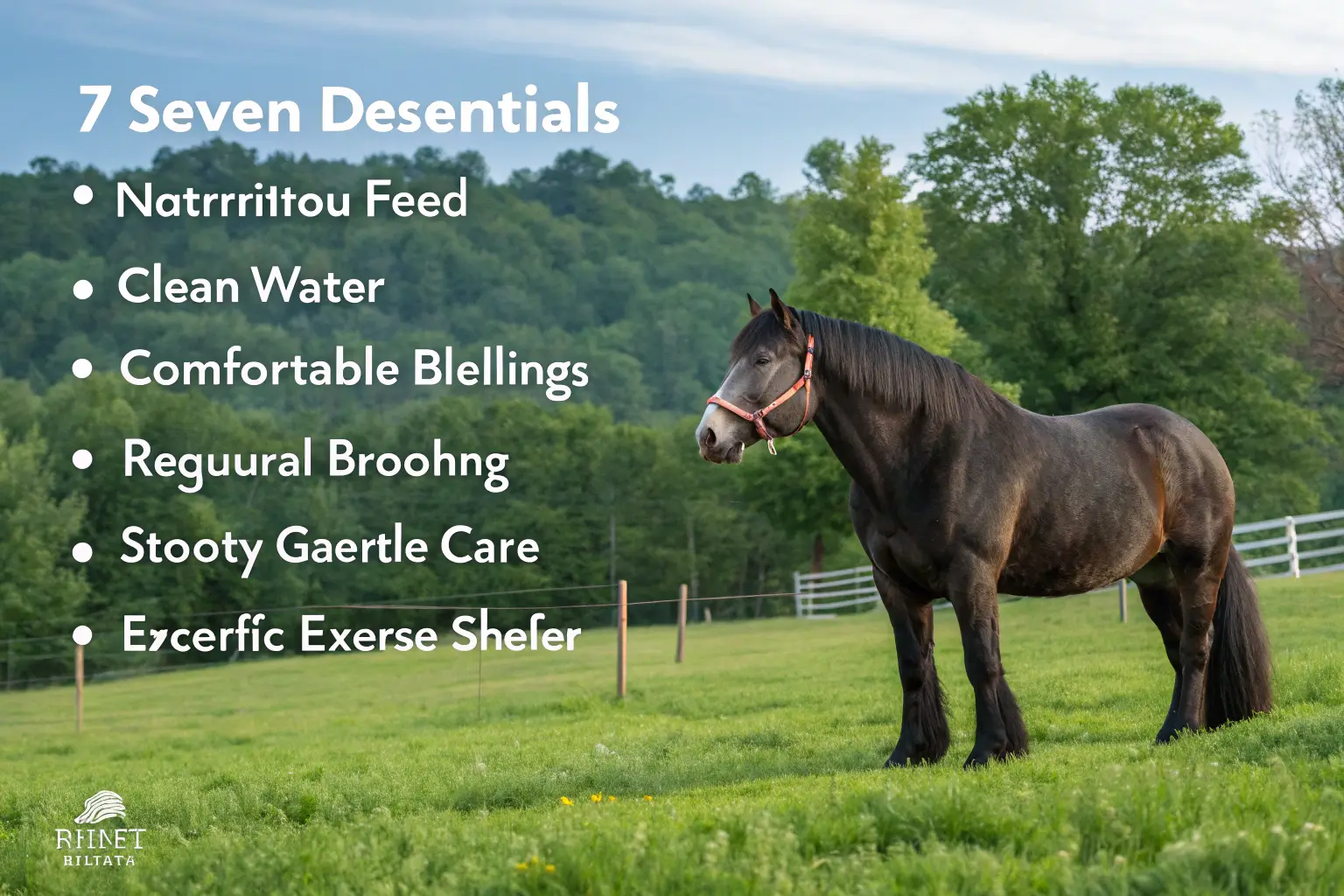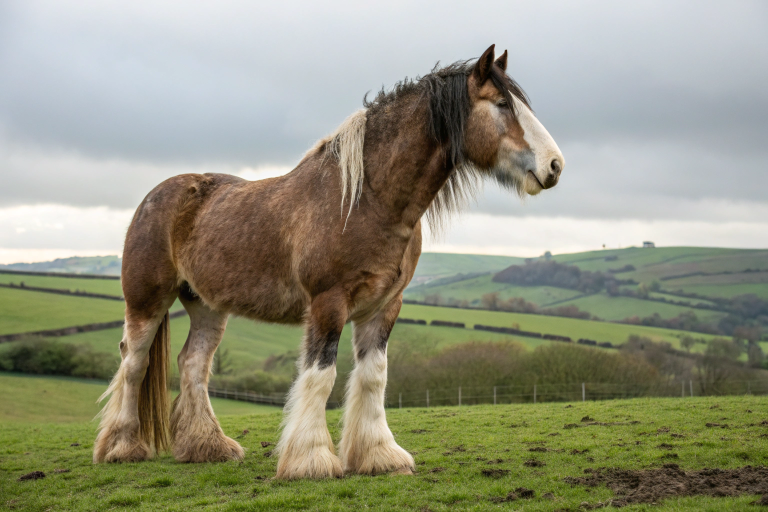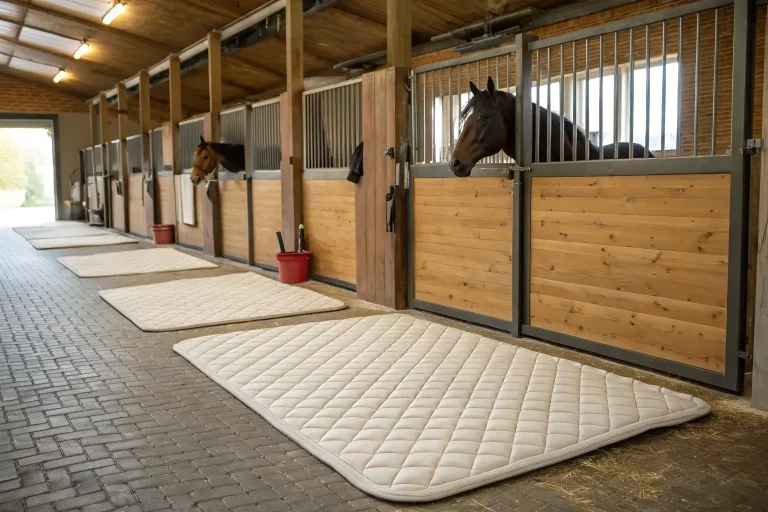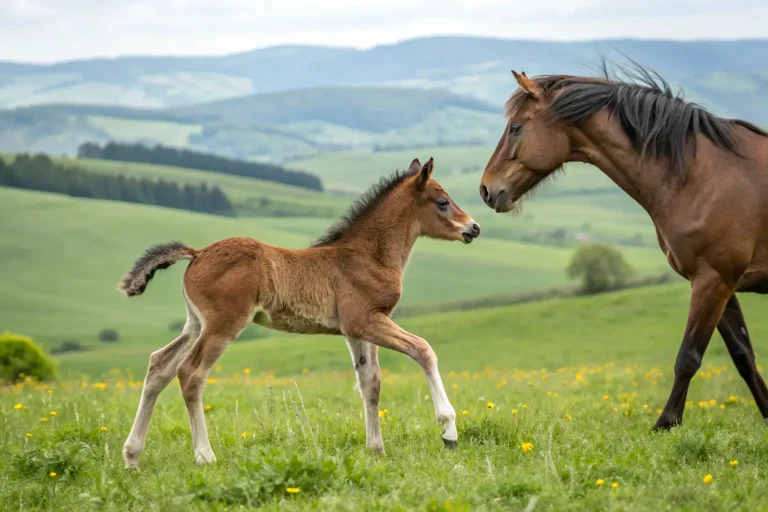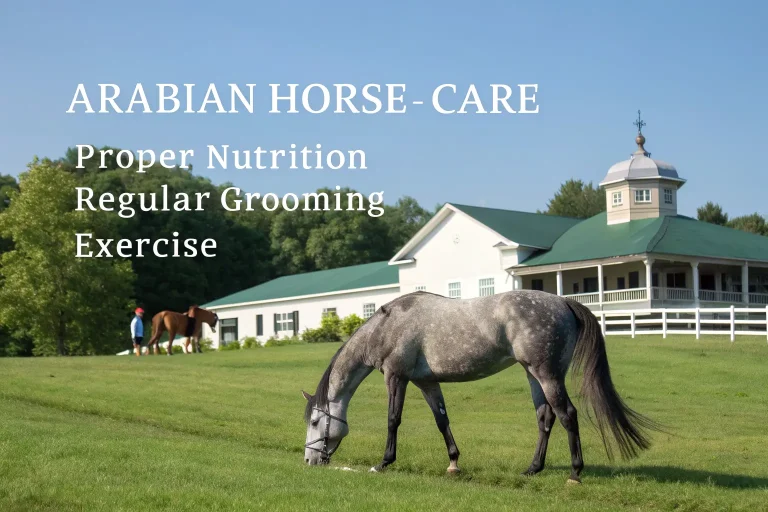Draft Horse Care: 7 Essentials for a Healthy, Happy Equine
Introduction
Draft horses, those gentle giants of the equine world, have captivated humans for centuries with their immense strength, calm temperament, and willing nature. These magnificent draft horse breeds—including Clydesdales, Percherons, Belgians, and Shires—have transitioned from their historical roles pulling plows and wagons to becoming beloved companions and show animals. Proper draft horse care is crucial for maintaining these powerful animals’ health and longevity, as their size brings unique challenges compared to lighter horse breeds.
Did you know that a typical draft horse can weigh between 1,500 to 2,400 pounds—nearly twice the weight of an average riding horse? This impressive stature requires specialized draft horse care knowledge to ensure these majestic animals thrive. Whether you’re a seasoned draft horse owner or considering bringing one of these magnificent creatures into your life, understanding their specific needs is essential for maintaining their well-being.
Species Overview
Scientific Classification
Draft horses belong to the same species as all domestic horses—Equus ferus caballus. What distinguishes draft horses is not their scientific classification but their selective breeding for size, strength, and temperament over many generations.
Physical Characteristics
Draft horses are instantly recognizable by their imposing size, powerful build, and distinctive features:
- Height: Most draft horses stand between 16 and 19 hands high (64-76 inches at the withers)
- Weight: Depending on the breed, draft horses typically weigh between 1,500-2,400 pounds
- Build: Broad chest, muscular shoulders, thick neck, and powerful hindquarters
- Legs: Strong legs with substantial bone, often featuring “feathering” (long hair on the lower legs) in many breeds
- Hooves: Significantly larger than light horse breeds, providing a stable foundation for their enormous weight
- Temperament: Known for their docile, willing disposition often described as “gentle giants”
Common Draft Horse Breeds
Draft horse care may vary slightly based on the specific breed requirements:
- Belgians: Known for their chestnut coloring and blonde manes, they’re among the strongest draft breeds
- Clydesdales: Famous for their white feathering and high-stepping gait
- Percherons: Often gray or black, with a slightly more refined build
- Shires: Typically black, bay, or gray with extensive feathering, often the tallest draft breed
- Suffolks: Chestnut colored with minimal feathering, known for their willing work ethic
Habitat and Care Requirements
Natural Environment
Draft horses thrive in spacious environments with access to pasture. While they were historically developed in temperate European climates, these adaptable animals can live successfully in various environments with proper draft horse care accommodations:
- Space requirements: Significantly more than light horses—minimum 2-acre pasture per draft horse
- Shelter needs: Large run-in sheds or stalls measuring at least 12′ x 12′ (many experts recommend 14′ x 14′)
- Fencing: Requires sturdy, robust fencing appropriate for their size and strength
Regional Adaptations
Draft horse care must consider the animal’s environment:
- Cold weather: Most draft breeds have evolved thick winter coats and handle cold well, though shelter from harsh elements remains essential
- Hot weather: Their large body mass makes draft horses more susceptible to heat stress—shade, fans, and cooling measures are critical in warm climates
- Terrain considerations: Level, soft ground is ideal for their joints and massive hooves
Diet and Feeding Practices
Nutritional Requirements
Proper draft horse care begins with nutrition. Despite their size, draft horses often have efficient metabolisms and may require less feed per pound of body weight than lighter breeds:
- Forage: High-quality hay (typically 1.5-2% of body weight daily) forms the foundation of their diet
- Concentrates: Less grain than might be expected—many draft horses maintain weight primarily on good forage
- Supplements: Typically need vitamin/mineral supplementation, especially if local soils are deficient
Feeding Behavior
Understanding natural draft horse feeding patterns helps optimize their care:
- Grazing time: Like all horses, drafts evolved as continuous grazers
- Water consumption: Can drink 10-15 gallons daily, with increased needs during hot weather or work
- Salt requirements: Free-choice salt blocks are essential for proper electrolyte balance
Special Dietary Considerations
Draft horse care often includes managing these common nutritional concerns:
- Weight management: Many drafts are “easy keepers” prone to obesity
- HYPP: Hyperkalemic Periodic Paralysis affects some draft bloodlines, requiring careful potassium monitoring
- PSSM: Polysaccharide Storage Myopathy is more common in draft breeds, often requiring specialized low-starch diets
Behavior and Social Structure
Social Behavior
Draft horses, like all equines, are herd animals with strong social needs that should be considered in draft horse care:
- Herd dynamics: They typically establish a clear hierarchy within groups
- Companionship: Draft horses generally thrive with equine companions
- Human interaction: Most drafts form strong bonds with their handlers, showing exceptional trainability
Communication
Understanding how draft horses communicate enhances care and training:
- Body language: Ear position, tail movements, and stance communicate mood and intention
- Vocalizations: Whinnies, nickers, and snorts serve various communication purposes
- Touch sensitivity: Despite their size, drafts often respond to subtle tactile cues
Work Ethic and Training
Draft horse care includes proper mental stimulation and appropriate work:
- Trainability: Most drafts are known for their willing attitudes and patience
- Work capacity: While incredibly strong, they require gradual conditioning for sustained work
- Rest requirements: Need proper recovery time after exertion due to their mass and metabolic processes
Health Management
Common Health Concerns
Effective draft horse care requires vigilance for these breed-specific health issues:
- Developmental orthopedic diseases: Their rapid growth can lead to joint and bone problems
- Respiratory issues: More susceptible to heaves/COPD due to their deep chest conformation
- Skin conditions: Feathering can harbor infections like scratches/pastern dermatitis
- Heart strain: Their size places greater demands on their cardiovascular system
Preventative Care
Regular preventative measures are essential for draft horse care:
- Vaccination schedule: Similar to light horses, with seasonal considerations
- Deworming protocol: May require adjusted dosages based on weight
- Dental care: Requires specialized equipment due to their larger mouths and heads
Hoof Care
Draft horse hooves require special attention:
- Trimming frequency: Generally every 6-8 weeks
- Shoeing considerations: Many need custom-made shoes due to hoof size
- Founder risk: Their weight increases the seriousness of laminitis if it occurs
7 Essentials for Draft Horse Care
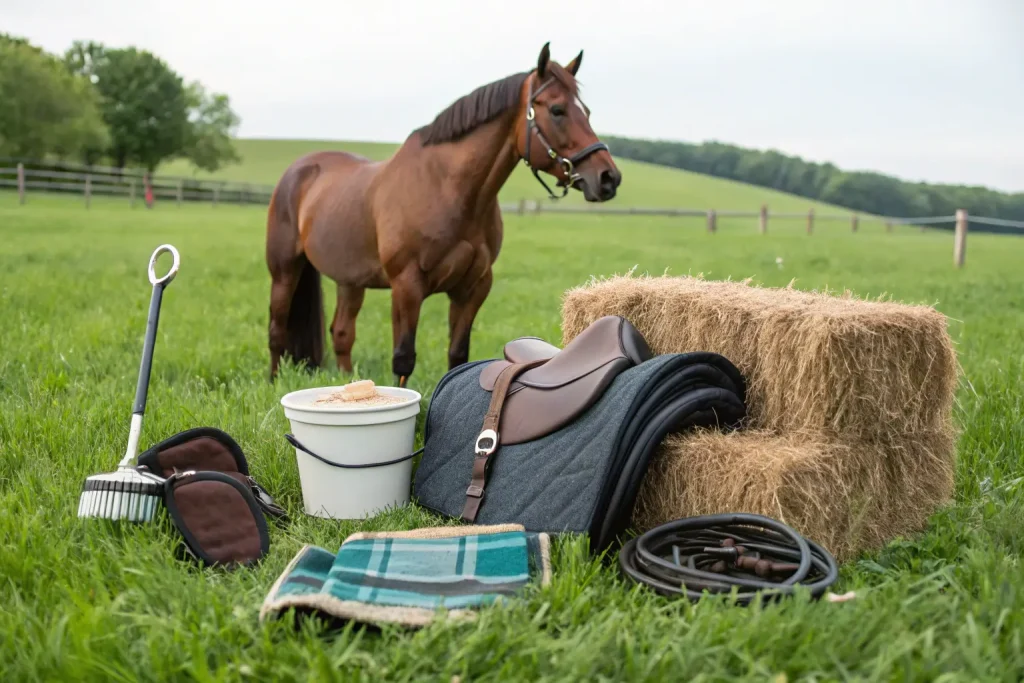
1. Proper Nutrition Management
The cornerstone of draft horse care is appropriate feeding:
“My Belgian draft thrives on a primarily forage-based diet,” says Sarah Milligan, who has raised draft horses for over 20 years. “Contrary to what many expect, he actually needs less concentrated feed than my smaller horses relative to his size.”
Key nutrition practices include:
- Providing 25-35 pounds of quality hay daily for the average draft
- Limiting grain unless needed for work energy or weight maintenance
- Ensuring all dietary changes occur gradually
- Establishing regular feeding schedules to prevent digestive upset
2. Specialized Hoof Care
The saying “no hoof, no horse” applies doubly to draft horses:
- Schedule regular farrier visits every 6-8 weeks without fail
- Work with a farrier experienced specifically with draft horses
- Monitor for thrush in feathered breeds, especially in wet conditions
- Consider boots or pads when working on hard surfaces
“Draft horse hooves bear extraordinary weight,” explains master farrier Thomas Jenkins. “Proper trimming that maintains correct angles is critical to preventing lameness issues that can be devastating in animals of this size.”
3. Appropriate Exercise and Conditioning
Maintaining fitness is vital in draft horse care:
- Implement gradual conditioning programs rather than sporadic heavy work
- Provide daily turnout for natural movement and mental health
- Include varied activities—driving, riding, groundwork—for physical and mental stimulation
- Monitor for signs of fatigue, which can develop before obvious distress signals
4. Customized Living Quarters
Draft horse care requires appropriately sized accommodations:
- Provide stalls at least 12′ x 12′, preferably larger at 14′ x 14′
- Ensure doorways are wide enough (minimum 4 feet) for safe passage
- Maintain clean, deeply bedded stalls to cushion joints during rest
- Install water buckets and feeders at appropriate heights
5. Specialized Equipment and Tack
Proper draft horse care includes correctly fitted equipment:
- Use harnesses designed specifically for draft conformation
- Ensure saddles (if riding) have appropriate tree width for broad backs
- Select halters and bridles properly sized for draft heads
- Invest in quality equipment—drafts can damage inadequate tack through their strength
6. Comprehensive Health Monitoring
Proactive health supervision forms the foundation of draft horse care:
- Establish a relationship with a veterinarian experienced with draft breeds
- Maintain detailed weight and health records to track changes
- Learn to take vital signs, including how to use a draft-sized stethoscope
- Create a first aid kit with appropriately sized supplies and properly calculated medication doses
7. Climate-Appropriate Management
Effective draft horse care adapts to environmental conditions:
- Provide extensive shade options and cooling strategies during hot weather
- Monitor for heat stress, which drafts are particularly susceptible to
- Supply appropriate blanketing in cold, wet conditions when necessary
- Adjust feeding and exercise based on seasonal needs
“The biggest mistake new draft owners make is assuming these horses can handle heat because of their size,” cautions Dr. Emily Reeves, equine veterinarian. “Their large muscle mass actually makes them more susceptible to overheating. In summer, I recommend limiting work to early mornings and providing constant access to shade and fresh water.”
Conservation Status and Historical Significance
Breed Preservation
Several draft horse breeds face conservation challenges:
- Suffolk Punch: Listed as critically endangered by the Rare Breeds Survival Trust
- American Cream Draft: One of America’s rarest breeds with fewer than 400 registered animals
- Clydesdale: While famous, registered numbers have declined significantly
Historical Importance
Draft horse care honors these breeds’ historical contributions:
- Powered farming operations for centuries before mechanization
- Transported goods and people in urban and rural settings
- Contributed significantly to industrial development and military campaigns
- Influenced modern horse breeds through selective crossbreeding
Interesting Facts About Draft Horses
- The largest horse ever recorded was a Shire named Sampson (later renamed Mammoth), who stood 21.2½ hands (86.5 inches) tall and weighed approximately 3,360 pounds.
- Despite their immense size, many draft horses are known for their exceptional agility and can perform complex maneuvers in driving competitions.
- A team of draft horses can pull up to three times the weight they could pull individually when working together—a phenomenon known as “draft horse math.”
- The Budweiser Clydesdales must meet strict criteria: they must be geldings, at least four years old, stand 18 hands tall, weigh between 1,800-2,300 pounds, have a bay coat, four white legs, a white blaze, and a black mane and tail.
Tips for New Draft Horse Owners
If you’re considering draft horse care, prepare for these realities:
- Budget considerations: Expect significantly higher costs for feed, veterinary care, farrier services, and equipment
- Handling training: Learn proper techniques for managing animals with tremendous size and strength
- Time commitment: Draft horses typically require the same or more time than light horses despite their often calm demeanor
- Space requirements: Ensure your facilities can accommodate their size before bringing them home
“Start with a well-trained draft horse if you’re new to the breed,” advises William Cooper, draft horse trainer. “Their strength means safety must always be your priority, but a properly trained draft will be one of the most willing, gentle partners you’ll ever find.”
Conclusion
Proper draft horse care combines specialized knowledge with dedication and respect for these magnificent animals. From their massive nutritional needs to their gentle temperaments, drafts represent a unique subset of the equine world that rewards owners with unmatched loyalty and partnership. By focusing on the seven essentials outlined above—nutrition, hoof care, exercise, appropriate housing, proper equipment, health monitoring, and climate management—draft horse owners can ensure their gentle giants live long, healthy, and happy lives.
Whether you’re drawn to drafts for their historical significance, their impressive power, or simply their kind eyes and willing hearts, understanding their specific needs is essential. With proper draft horse care, these majestic creatures can thrive as working partners, show animals, or beloved companions for many years to come.
Frequently Asked Questions
How much does it cost to feed a draft horse compared to a light horse?
Draft horses typically consume 25-35 pounds of hay daily compared to 15-20 pounds for light horses. While their metabolism is often more efficient, expect to spend approximately 40-60% more on feed annually, with costs varying based on local hay prices and individual metabolic needs.
Are draft horses good for beginners?
Well-trained draft horses often have excellent temperaments for beginners due to their typically calm, patient dispositions. However, their size requires handlers to have proper training in safe management techniques. A trained draft can be an excellent teacher, but a green draft requires an experienced handler.
How long do draft horses typically live?
With proper draft horse care, these breeds typically live 20-25 years, slightly less than the 25-30 years common for light horses. Their larger size puts additional strain on their cardiovascular and skeletal systems, often resulting in a somewhat shorter lifespan.
Can draft horses be ridden as well as driven?
Absolutely! Many draft horses make excellent riding horses, particularly for larger riders. Their broad backs typically require special saddles, and riders should understand their movement differs from light horse breeds—offering a smoother but wider ride with different balance points.
What special considerations should I make for transporting my draft horse?
Transport requires larger trailers with appropriate height (minimum 8 feet), reinforced flooring, and often custom loading arrangements. Many commercial horse trailers cannot safely accommodate draft horses, so specialized equipment may be necessary for transportation.

